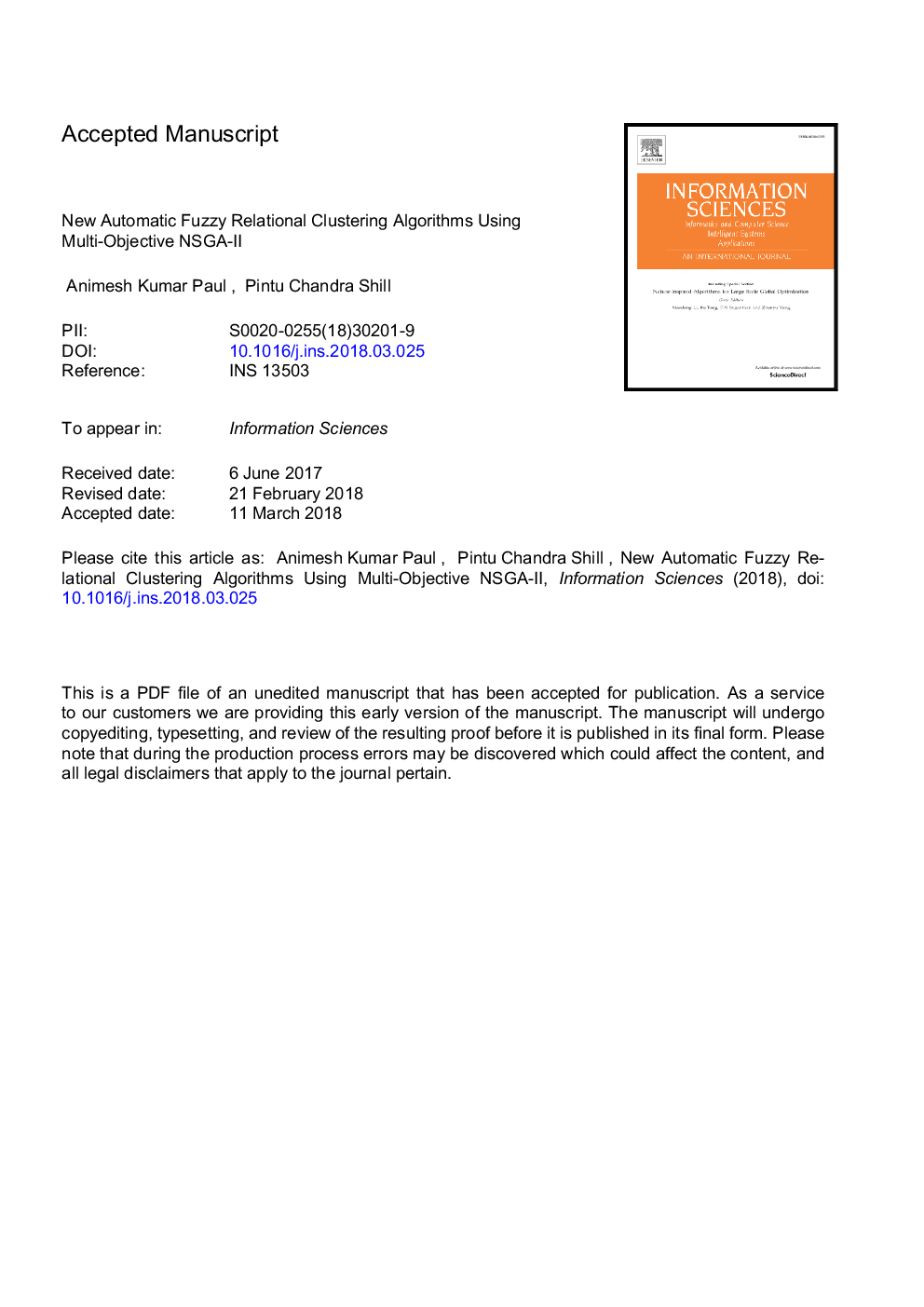| کد مقاله | کد نشریه | سال انتشار | مقاله انگلیسی | نسخه تمام متن |
|---|---|---|---|---|
| 6856485 | 1437959 | 2018 | 39 صفحه PDF | دانلود رایگان |
عنوان انگلیسی مقاله ISI
New automatic fuzzy relational clustering algorithms using multi-objective NSGA-II
دانلود مقاله + سفارش ترجمه
دانلود مقاله ISI انگلیسی
رایگان برای ایرانیان
کلمات کلیدی
موضوعات مرتبط
مهندسی و علوم پایه
مهندسی کامپیوتر
هوش مصنوعی
پیش نمایش صفحه اول مقاله

چکیده انگلیسی
Most of the fuzzy clustering methods use only centroid information and cannot differentiate the geometric structures of clusters due to the cohesion and separation measures of the fuzzy partition. Moreover, conventional clustering methods confine the search space of automatic fuzzy clustering as it shows a tendency to fall into local minima as well as the number of clusters is required to be provided as prior knowledge. In this paper, combining fuzzy relational clustering (FRC) with multi-objective genetic algorithm NSGA-II, we propose two new fuzzy relational clustering methods, referred to as FRCNSGA and IFRCNSGA. In IFRCNSGA, NSGA-II is used to adjust the parameters of FRC algorithm dynamically such as the appropriate number of clusters and the initial membership values. Thus this proposed model handles the intricacy of automatic clustering a dataset, at the same time, avoids the problem of falling into local minima quickly. For both of the proposed models, NSGA-II is used to optimize two cluster validity indices named, separation, and cohesion, simultaneously, whereas, FRC is used to handle the overlapping properties of clusters. In this case, fuzzy membership degrees are used to compute the overlap-separation. To eliminate the impediment of automatic fuzzy clustering, it is necessary to optimize one or more criteria. Therefore, we consider NSGA-II as an optimization algorithm to optimize more than single criterion. The experimental results have exhibited that the intended methods provide competitive results in the compound, overlapped, high-dimensional gene expression and non-gene expression datasets. The proposed methods are able to determine well-separated, hyperspherical, noncompact and overlapping clusters compared to other existing methods.
ناشر
Database: Elsevier - ScienceDirect (ساینس دایرکت)
Journal: Information Sciences - Volumes 448â449, June 2018, Pages 112-133
Journal: Information Sciences - Volumes 448â449, June 2018, Pages 112-133
نویسندگان
Animesh Kumar Paul, Pintu Chandra Shill,